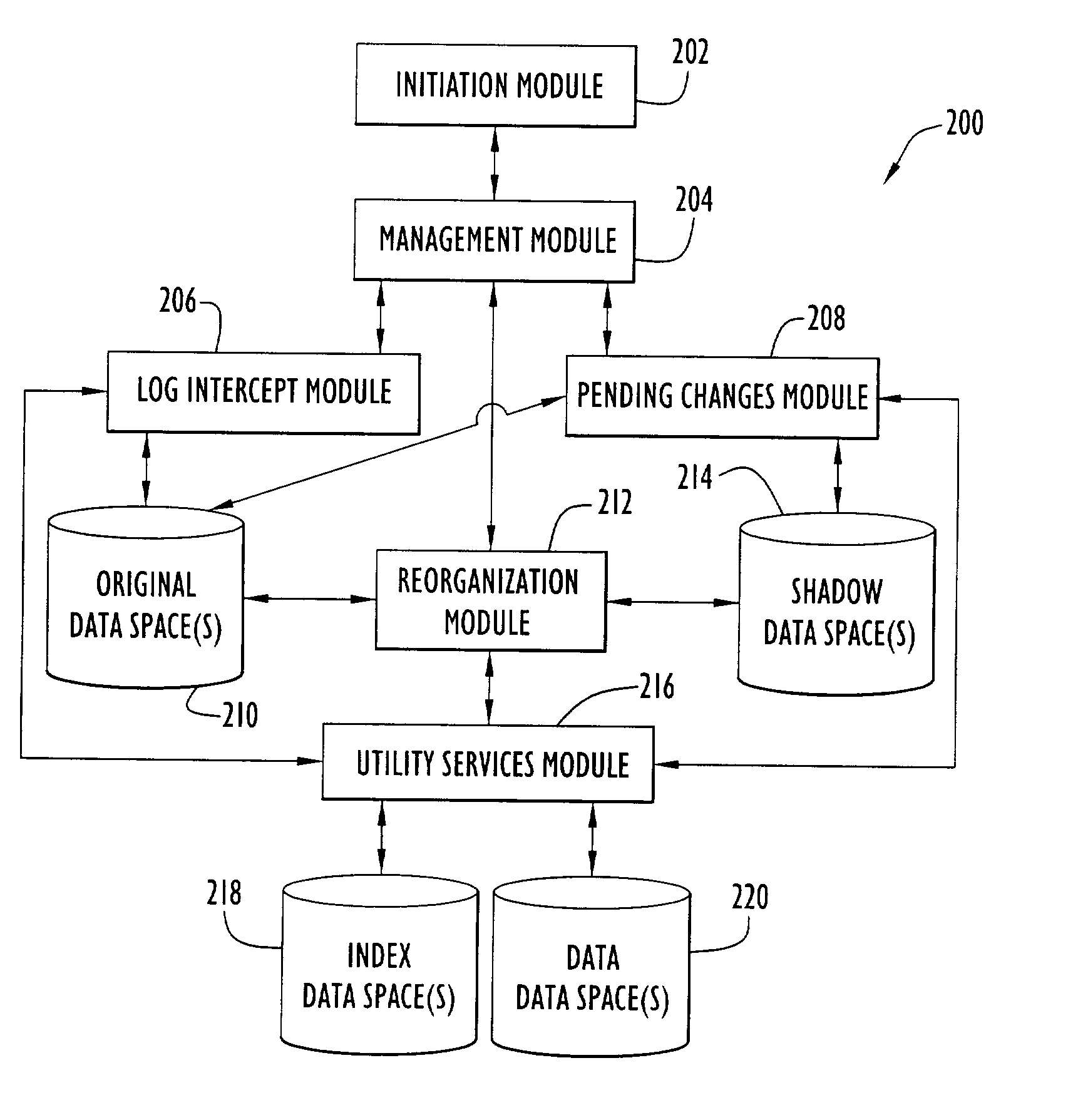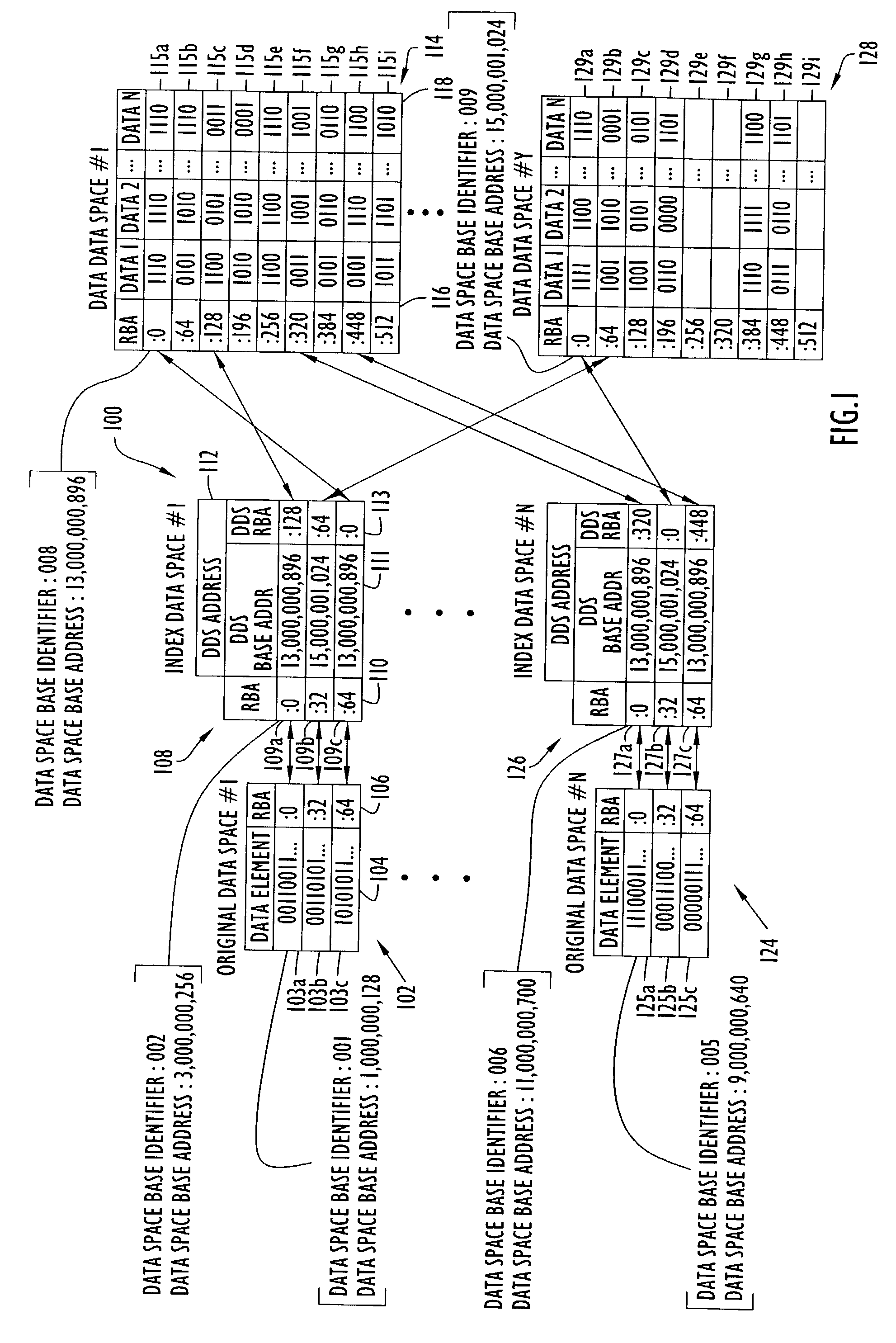Capturing data changes utilizing data-space tracking
a data space and data technology, applied in the field of database management systems, can solve the problems of increasing the likelihood of adverse operational impacts, increasing the time required to perform administrative tasks on the database, and system administrators finding it more and more difficult to schedule much needed maintenance and optimization routines, and achieve significant storage space efficiencies and processing efficiencies.
- Summary
- Abstract
- Description
- Claims
- Application Information
AI Technical Summary
Benefits of technology
Problems solved by technology
Method used
Image
Examples
Embodiment Construction
[0020]The embodiments described below are described with reference to the above drawings, in which like reference numerals designate like components.
[0021]Data-spaces are blocks of addressable memory space in a computer readable memory that can hold data, but are not allowed to execute program code. The resources used to access and manipulate data-spaces include a data-space base address that identifies the beginning of the data-space in memory. The location of a data-element within a data-space is determined relative to a data-space base address using a relative base offset address (RBA). An RBA can be represented, for example, as a number of bytes or bits from the data-space base address to the first byte, or bit, of a data-element. The location of a data-element anywhere within a group of data-spaces is identified with a data-space base address / RBA combination, wherein the RBA is an offset from its associated data-space base address. Since data-elements are stored in a data-space...
PUM
 Login to View More
Login to View More Abstract
Description
Claims
Application Information
 Login to View More
Login to View More - R&D
- Intellectual Property
- Life Sciences
- Materials
- Tech Scout
- Unparalleled Data Quality
- Higher Quality Content
- 60% Fewer Hallucinations
Browse by: Latest US Patents, China's latest patents, Technical Efficacy Thesaurus, Application Domain, Technology Topic, Popular Technical Reports.
© 2025 PatSnap. All rights reserved.Legal|Privacy policy|Modern Slavery Act Transparency Statement|Sitemap|About US| Contact US: help@patsnap.com



